Driving along the road from Pertuis to Cavaillon, following the meandering course of the Durance River, the perched village and castle of Lauris often caught my eye.
Framed by the lush valley below, Lauris appeared both magnificent and intriguing from my vantage point in the car.
Despite its allure, I was usually in a rush to reach other destinations, so it remained a mere picturesque backdrop to my journeys.
However, one crisp October day, curiosity got the better of me, and I decided to visit the village itself.
Stepping into Lauris was like uncovering a hidden gem that had been quietly waiting for my discovery.
The charm and beauty of the place were so captivating that I found myself drawn back not once, but twice more.
Each visit unfolded new layers of its serene allure, making Lauris a personal favourite in my travel diary.
Join me as I share the delightful day I finally got to explore Lauris through photographs and a video that barely do justice to its serene beauty.

Rue sur la Roque, Lauris © French Moments
Watch this short video on the Luberon!
Plan your trip
- 🛏 Find the best accommodations in the Luberon on Booking.com
- 🚙 Rent a car in Aix-en-Provence or Marseille-Provence Airport
- 🙋♀️ Get the PASS CÔTE D'AZUR and take your pick from more than 100 amazing experiences!
- 🤩 Visit the beautiful Provençal region of Luberon
- 🚐 Join a 6-hour tour of Lourmarin, Bonnieux, Roussillon, and Gordes by air-conditioned minibus
- 🚘 Discover Provence in a 2CV. Stroll along exceptional roads and enjoy a piece of Luberon all to yourself!
- 🥗 Experience a black truffle hunting tour in a Luberon plantation
- 📚 Read the DK Eyewitness Provence and the Côte d’Azur Travel Guide
- 🗺️ Download the map of the village.
- 🚗 There are several parking spaces in the village, in particular Place de Remilly and Place Jean Moulin.
Lauris: A Bit of History
Let’s step back in time as we recall the storied past of Lauris.
A Roman notable named Laurus
Laurus, a Roman notable, had a villa, the Villa Laurias, which became the village of Villelaure, 12 km to the east.
Laurus, which means laurel, also had a second villa downstream on the Durance.
And it was this villa that became Lauris.
However, the oldest written record of Lauris dates back to 1079.
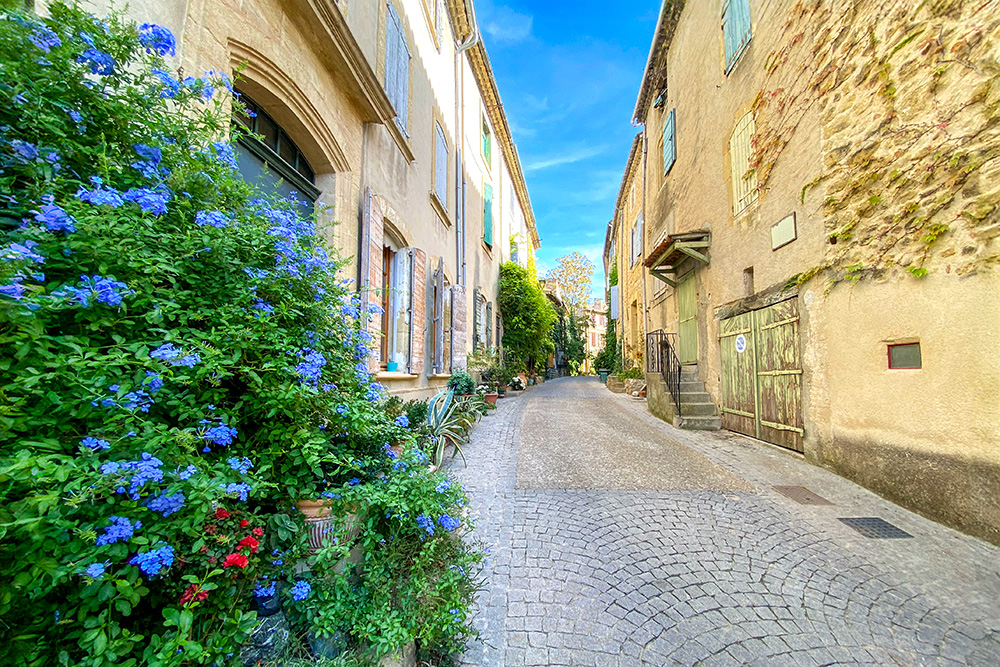
In the village © French Moments
From a Catholic Stronghold to a Prosperous Agricultural Land
With the fall of the Roman Empire in the 5th century, Lauris became the property of bishops and then the Counts of Provence.
During the Wars of Religion, Lauris remained faithful to Catholicism, unlike the neighbouring villages of Puget and Mérindol.
In the 19th century, agriculture took a significant leap, particularly in producing asparagus and cherries.
Today, Lauris is focused on craft and tourist activities.
Lauris seems spared from the heavy tourist development that has transformed the village life of other communes like Lourmarin or Gordes.
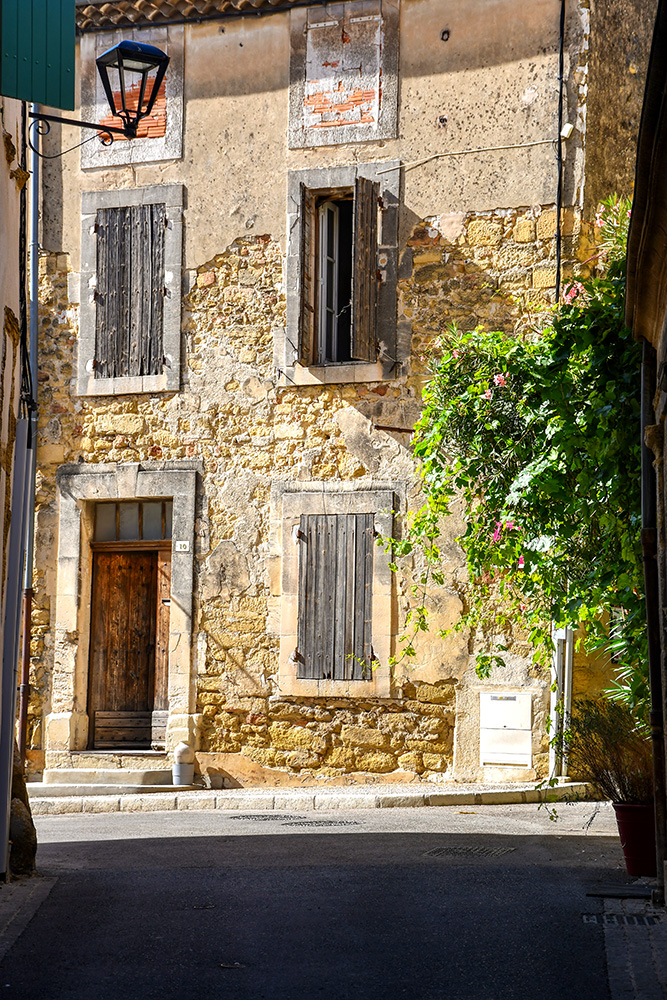
In the village © French Moments

An old street in the village © French Moments
The Lauris Cherries
The entire community of Lauris was engaged in processing cherries for the confectionery industry in Apt.
The tasks of destemming, peeling, cutting, and pitting were typically family activities.
Once prepared, the cherries were transported to one of three local factories where they underwent a blanching process.
Despite the use of boiling water, a sulphurous odour permeated the village streets due to the cherries also being treated in acid baths, specifically with sulphur dioxide or sulfurous anhydride—commonly used in winemaking.
The acidic residue from this process even eroded the village gutters.
Cherry pits were retained by families and used as a fuel source in stoves during the winter, effectively replacing coal in those times.
Music and Theatre in Lauris
In 1857, a group of musicians formed in Lauris.
Then, in 1899, a society called La Muse Laurisienne was established, aimed at promoting and developing a taste for theatre and organising evening events.
This society still exists today.
In Avenue Joseph Garnier, there was the Eden Hall, where musicians and singers gathered.
It was here that an unknown singer at the time came to perform for the first time on the 14th and 15th of September, 1930.
That singer was Tino Rossi.
During the war, the actors of La Muse presented shows in Lauris and the neighbouring villages.
The money collected served as a fund for the returning prisoners of war.

Place du Portail © French Moments
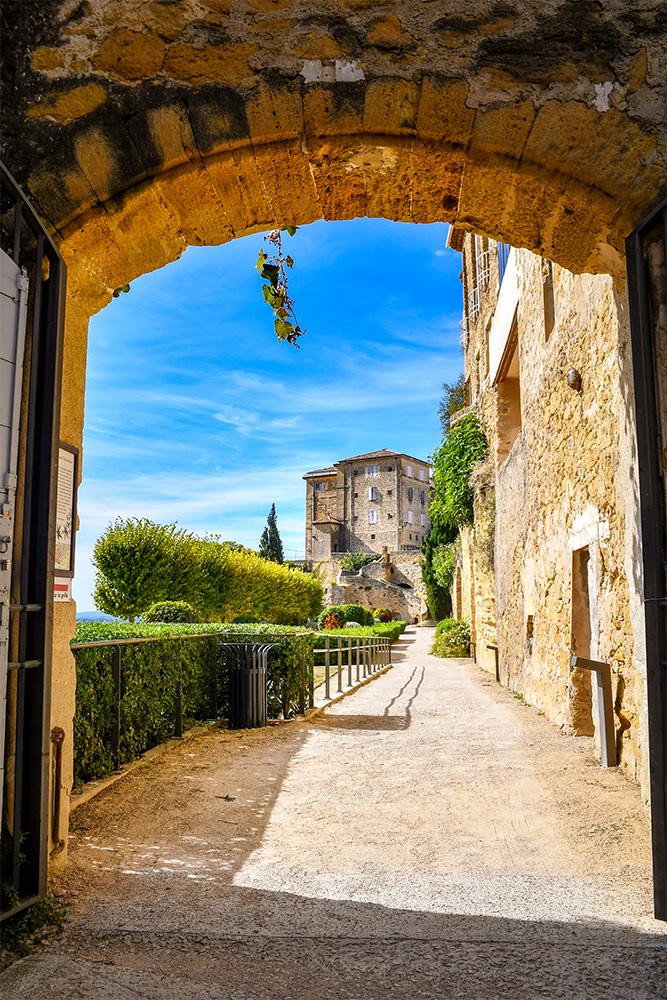
The castle's terraces © French Moments
The Discovery Guide of Lauris
Here's some tourist information to help you explore the Provencal village.
🎦 Check out my guided walk on YouTube to explore Lauris with me:
Understanding the Village
The village of Lauris is perched on a rocky promontory above the Durance valley.
You discover this vision of an enchanting hilltop village and its castle along the road from Cavaillon to Pertuis.
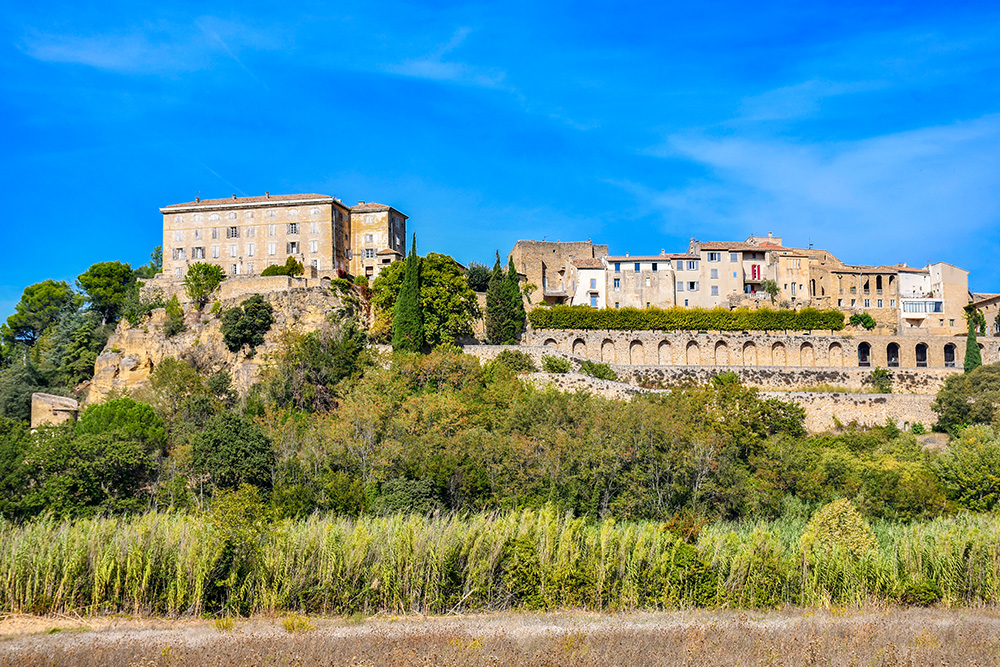
Lauris, Provence © French Moments
However, coming from Lourmarin, you approach Lauris from the "flat-lands" without suspecting that at the end of the old village, you will come up against the top of the cliff.
The old village is located at the end of Avenue Joseph Garnier and is bounded by Avenue Philippe de Girard.
Remember to take a short detour via Rue sur la Roque, which offers superb panoramic views over the Durance valley.
A Guide of the Village of Lauris
Let's begin our exploration of Lauris at the Place de la Mairie, located in the northeastern part of the village.
The Town-Hall of Lauris
The Town Hall of Lauris is an elegant building from 1890, which once housed a silkworm farm before being acquired by the municipality to become the town hall in 1952.
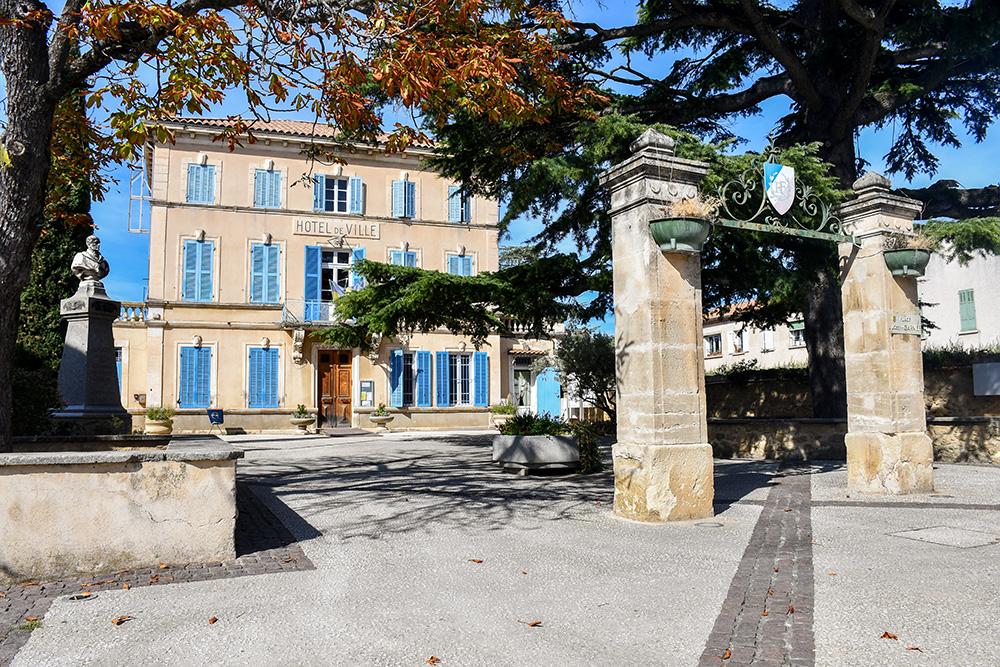
The town-hall of Lauris © French Moments
Avenue Joseph Garnier
Take the Avenue Joseph Garnier, which leads to the old village.
The Avenue Joseph Garnier is lined with shops and small boutiques.
Here you'll find the bakery, the butcher, vegetable stalls, banks, a pharmacy, a post office, and cafés and restaurants.

Boulangerie on Avenue Joseph Garnier © French Moments
This street is named after Joseph-François Garnier.
His father, who shared his name, was a renowned composer and oboist born in Lauris who performed at the Paris Opera in the late 18th century.
Joseph-François Garnier Junior became a doctor in Paris and also served as the mayor of Neuilly-sur-Seine.
Upon his death in 1865, he donated half his fortune to the commune of Lauris.
In recognition, Lauris erected a statue of him in front of the current town hall and named the main street of the village after him.

In the village of Lauris © French Moments
The Avenue Philippe de Girard to the right goes down into the valley and leads to the road from Pertuis to Cavaillon. However, continue to the Place du Portail in the old village.
Place du Portail and the Duck Fountain
The Place du Portail is a charming square that gives access to the old village.
On the square is the communal fountain known as the Duck Fountain, the “Fontaine du Canard”.

Fontaine du Canard © French Moments
It dates from 1853 and is topped not by a duck but by a swan.
Originally, the fountain was topped by a bronze swan, but this has since disappeared.
The villagers banded together to replace the swan, which in turn disappeared.
Perhaps the swans were stolen or flew off to join the waters of the Durance, offended at being called ducks?
In any case, until the arrival of running water in the village, people came here to fetch water for everyday household use or to give their mules a drink.
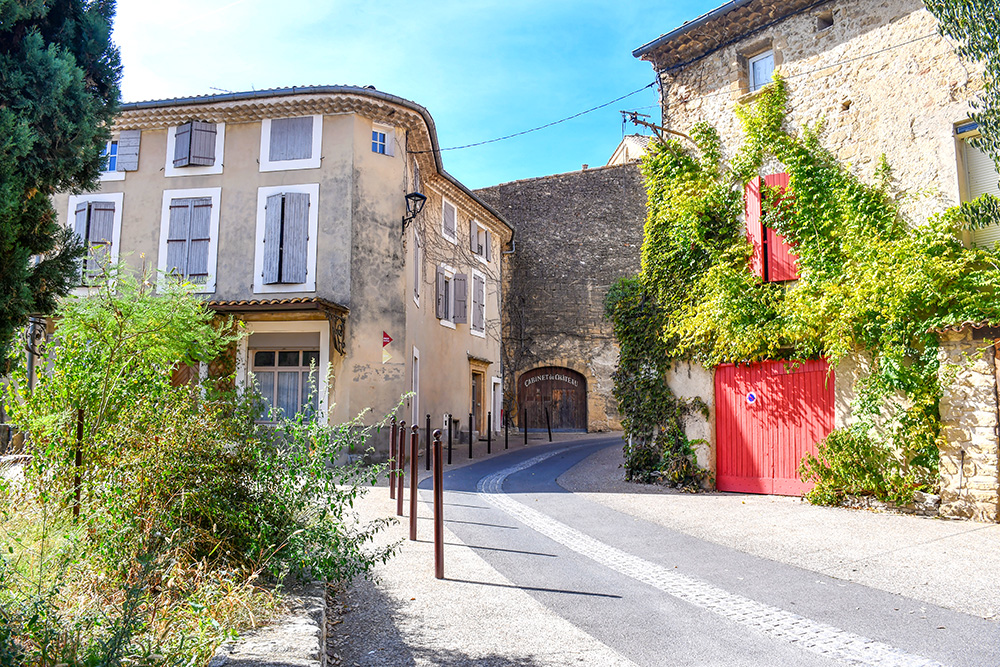
Place du Portail © French Moments
Rue sur la Roque
Before entering the old village, take the Rue sur la Roque on the left.
The street opens onto an breathtaking panorama!
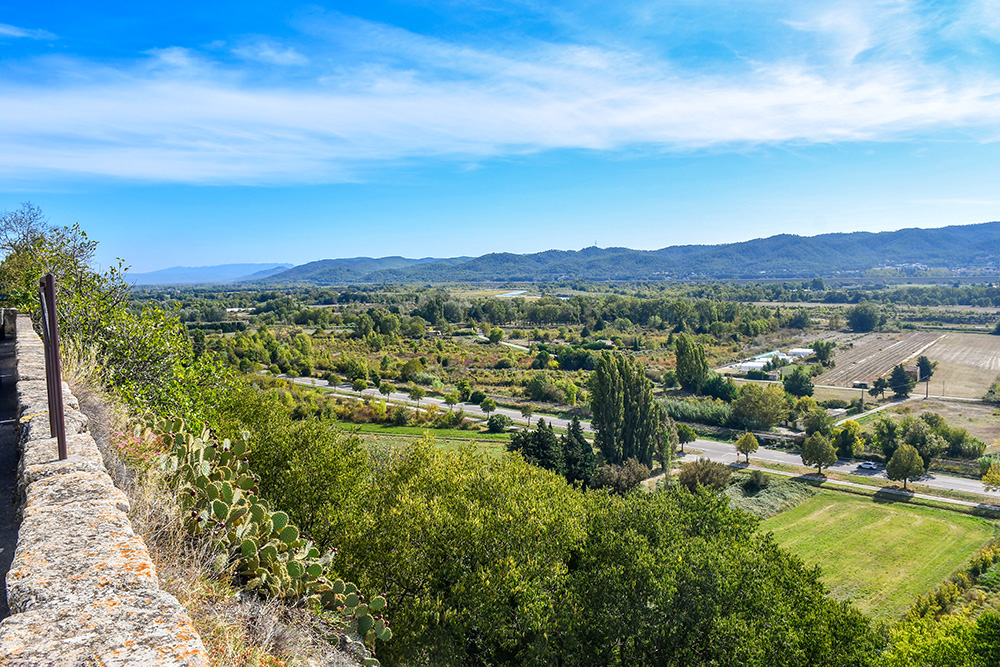
Rue sur la Roque © French Moments
Here, we realise that Lauris is actually a perched village.
You wouldn't have guessed it starting our visit from where we came.
What we see is the Durance Valley and, on the horizon, the Côtes mountain range.
In the distance, you can make out the Alpilles mountain range.

The Durance Valley and the Alpilles © French Moments
The Durance: the Nile of Provence
The Durance was channelled following the construction in 1959 of the Serre-Ponçon dam in the Alps.
Known as the “Nile of Provence”, the Durance was long considered the third plague of Provence, after the Mistral wind and the Parliament of Aix.
Indeed, its devastating floods have long marked the history of the region.
But it was these floods that enriched the surrounding lands with silt.
Here, people grew the famous asparagus and vegetables.
Cherries were sent to the confectioneries in Apt for the production of the renowned candied fruits.
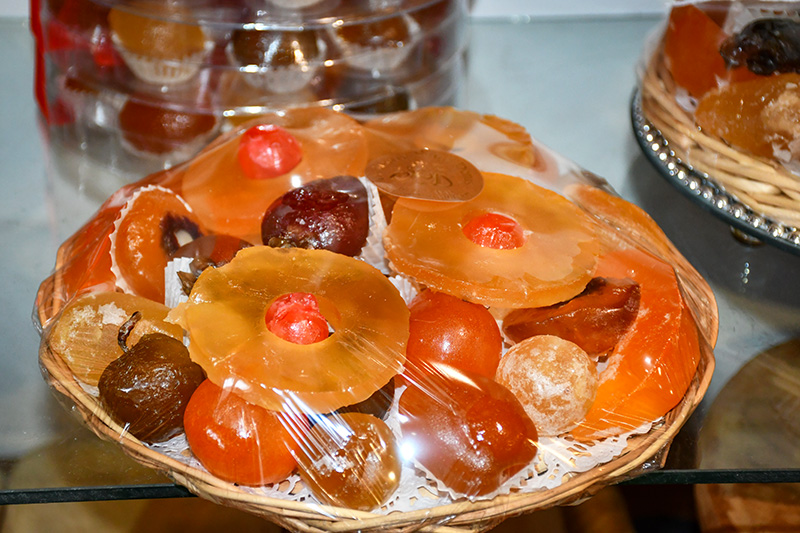
Apt candied fruits by Confiserie Saint-Denis © French Moments
The Castle's Terraces
From the Place du Portail, access to the castle gardens by descending the lane on your left.
Tthe castle gardens are a fantastic place that should not be missed during a visit to Lauris.
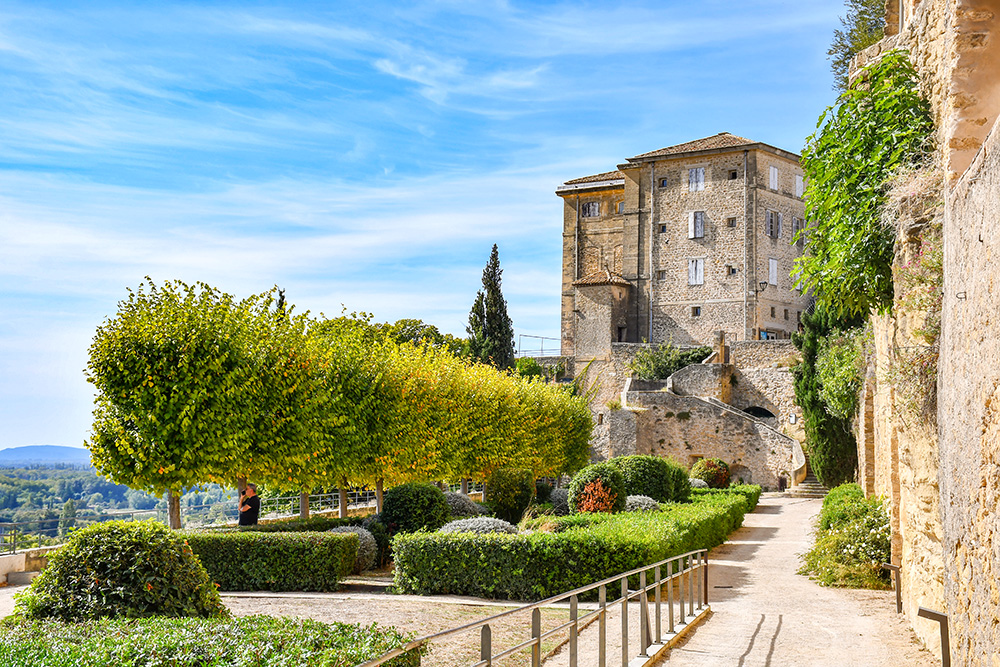
The terraces and the castle © French Moments
The first castle of Lauris dates back to the 11th century. It was a keep that overlooked the Durance valley.
Over the centuries, various lords added buildings that were frequently pillaged, restored, and then abandoned.
Jean Montaud d'Arlatan
But the current construction owes its existence to Jean Montaud d’Arlatan, the lord of Lauris in 1718, who dreamt of building a pleasure bastide there.
As the President of the Parliament of Aix, he was obliged to have a country residence.
He chose the site of Lauris, where he had spent his early childhood.
The construction stretched over three generations of his family.
Jean-Louis d’Arlatan refurbished the dilapidated castle to entertain his noble friends from Aix-en-Provence with great pomp.

The view from the terraces © French Moments
The terraces we are walking on were embellished with sumptuous gardens.
Originally, the garden extended over seven 40-metre-high terraces.
Many relics still attest to its former glory: monumental staircases, pools, and fountains.
This garden was one of the largest landscaped gardens in France in the 18th century.
But scarcely completed, the bastide was devastated during the French Revolution.
The d'Arlatan family sold the property to the André family around 1840.
Then the Andrés donated it to the Society of Foreign Missions in 1964, which occupied the premises until 1998.

The terraces © French Moments
The Castle's Courtyard and Place du Château
If open, climb the stairs at the end of the terraces to reach the courtyard of the castle.
Here is the Courtyard of the Castle, also known as the “Cour des Artisans”, the Craftsmen's Courtyard.
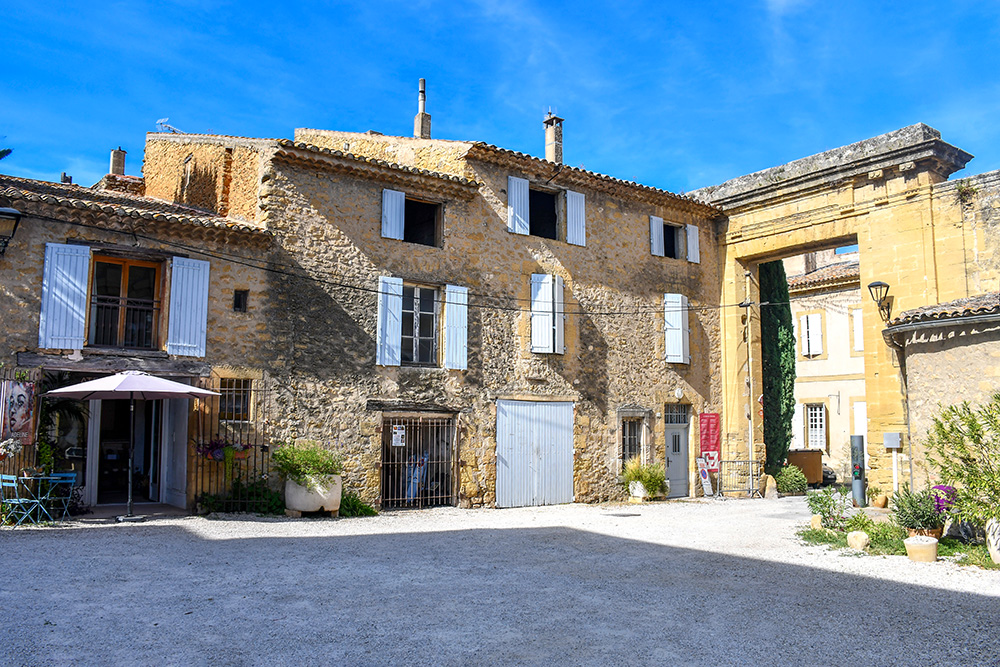
The castle's courtyard © French Moments
Pass through the main gate of the castle to arrive at the Place du Château.
To allow carriages to travel through the village streets, Jean-Louis d’Arlatan purchased a row of houses facing the entrance gate to demolish them.
Rue Rigaud and Rue Sainte Marguerite
Take a brief loop around the neighbourhood adjoining the castle.
Start by taking the Rue Rigaud, which leads to the Rue du Portail.
Then, return to the Place du Château via the Rue Sainte-Marguerite.
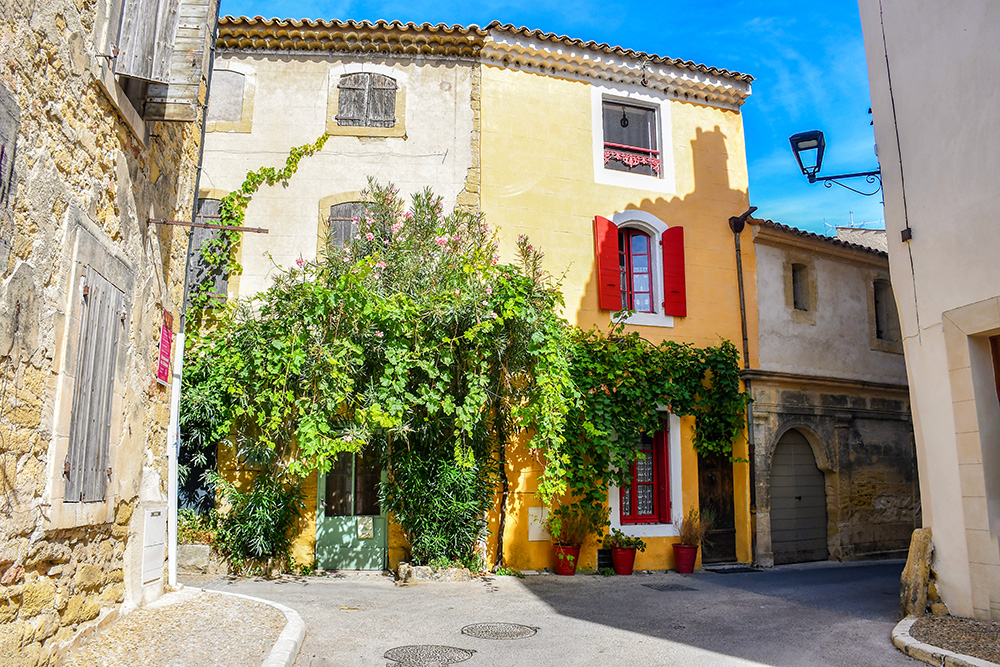
Rue Sainte-Marguerite © French Moments
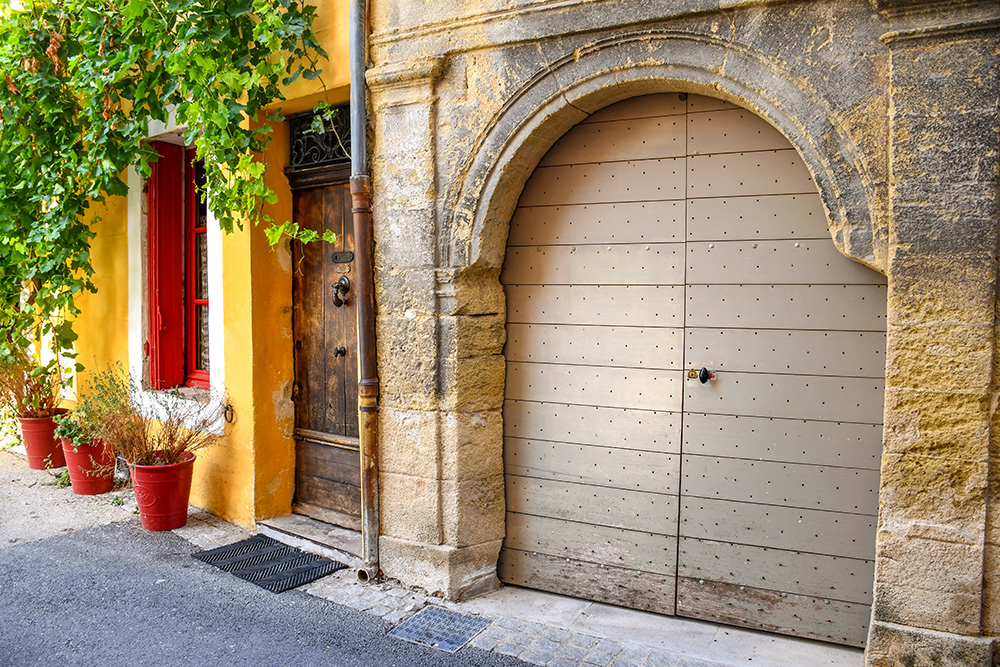
Porte Cochère, Rue Sainte-Marguerite © French Moments
In these streets, look out for the guard stones or "bouto-rodo" in Provençal.
These are large stones placed at the corners of streets, which once had significant utility. They served two functions:
- to prevent the hubs of the wheels from striking the walls of dwellings
- to aid in manoeuvring the cart. Indeed, in narrow streets, the cart's wheels would bump against the stone. As the animals continued to pull, the rear of the vehicle would skid and realign itself with the correct path.
Rue du Barry
Next, enter into a maze of old winding streets, starting with the Rue du Barry.
Ahead stands the “Maison Claustrale”, a stone building from the early 18th century that doesn't have many windows.
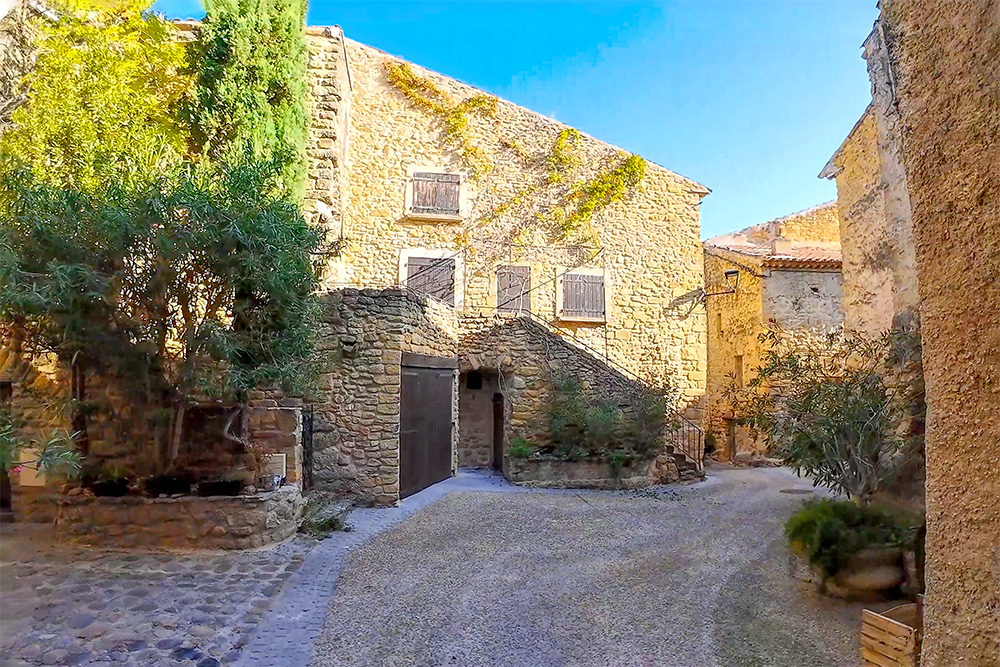
Maison Claustrale © French Moments
This is due to the window and door tax imposed in 1798 by the Directory, the French government at the time.
To pay less tax, the homeowners on the Rue du Barry decided to block several windows.
The old secretive streets
Just after the Maison Claustrale, take the Rue de la Tour on your right.
The Rue de la Tour, named after the Tour Philippe, a tower built in the 13th century and featuring two twin windows. The tower was named after Philippe de Lambesc, a valiant 14th-century lord.
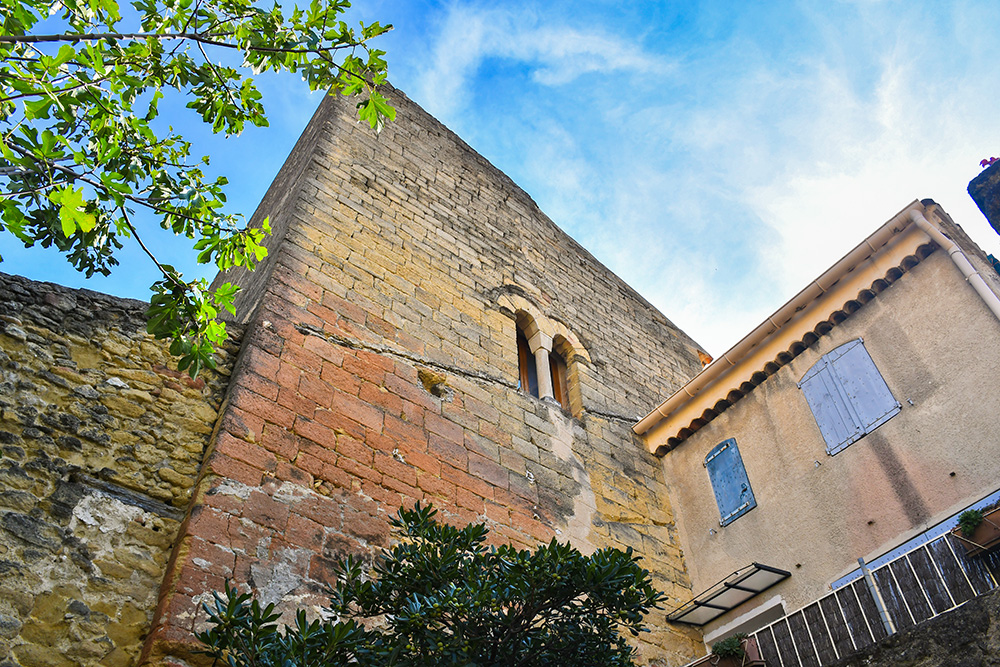
Tour Philippe © French Moments
Follow the street and, surprise, you'll find a secret corner, a haven of peace in the heart of the old village.

A haven of peace! © French Moments
You'll reach a passage through this archway on your left that leads to the church square. Continue ahead.
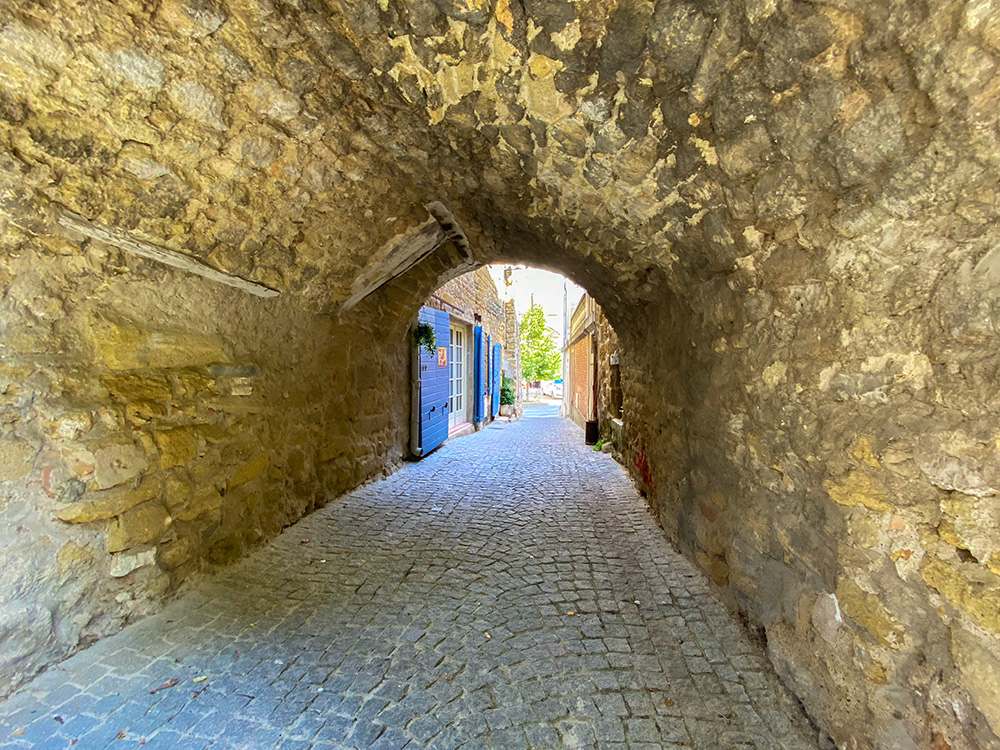
Passage de l'arcade © French Moments
You'll arrive at the small Place Jean d’Autant.
Then, you'll reach the Rue du Barry. Follow the street one more time pass the Maison Claustrale until the intersection with the Grand-Rue.
Grand-Rue
The Grand-Rue is a very special street.
There, residents have set up garden tables and chairs in front of their homes.
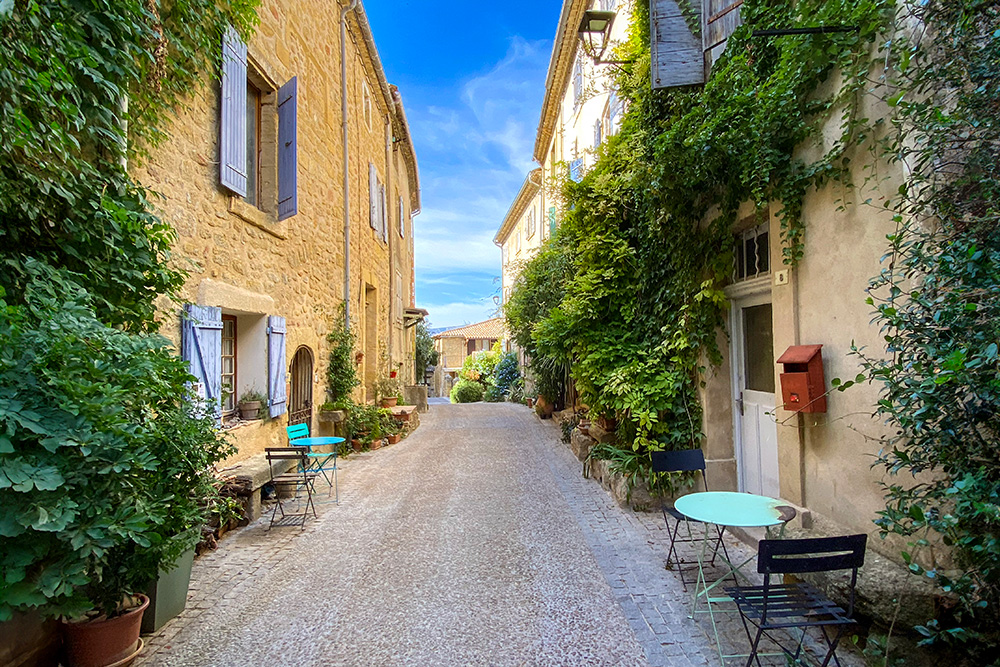
Grand Rue © French Moments
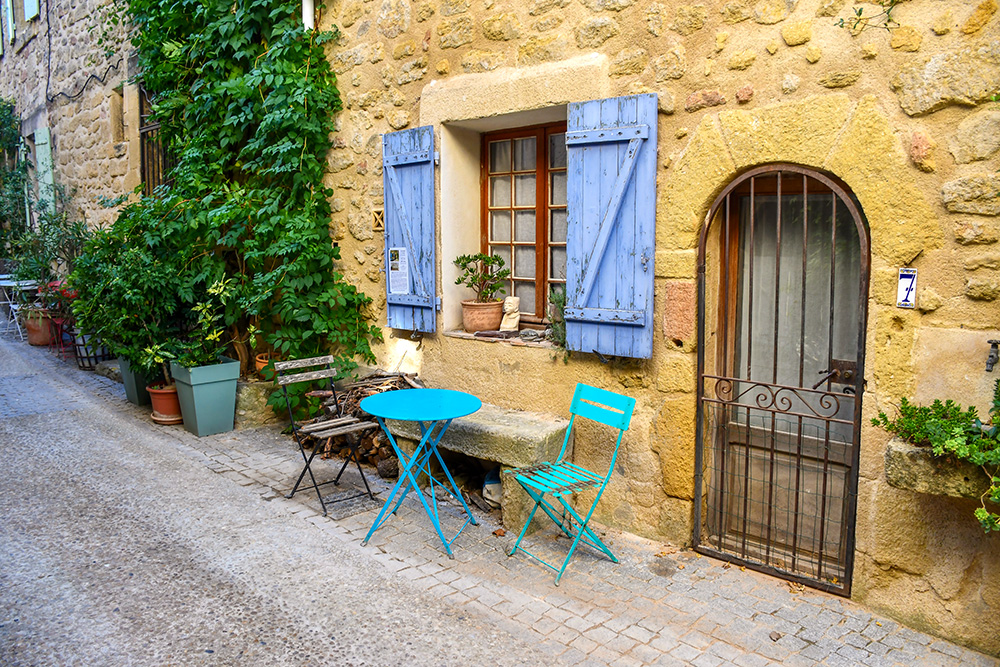
Table and seats on Grand Rue © French Moments
The high street leads us to the Rue du Couvent, which will take us to the church square, the “Place de l’église”.
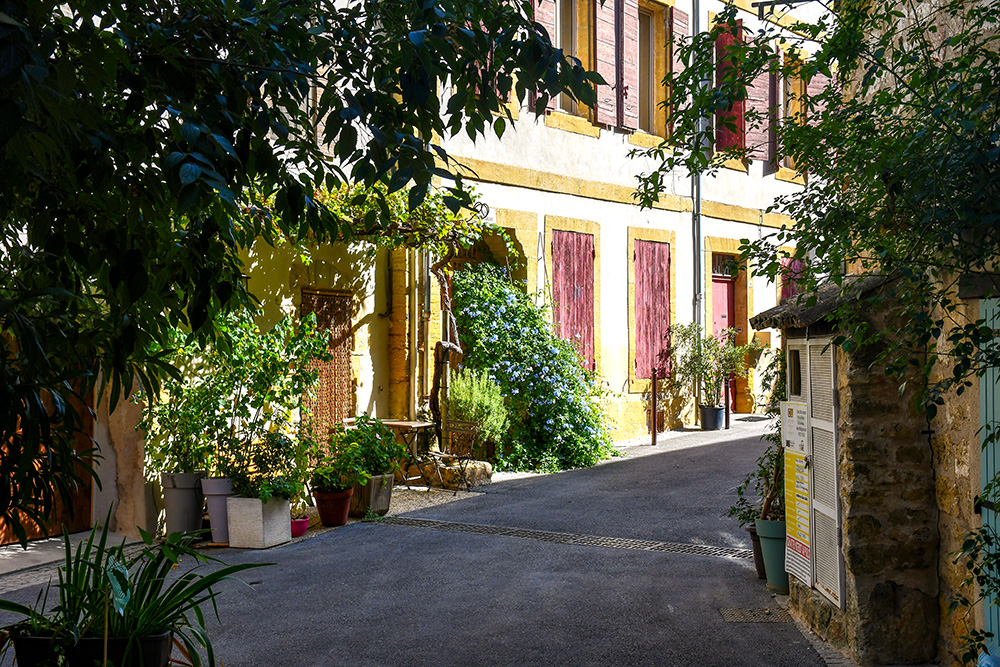
Rue du Couvent © French Moments
The House of an Irish Colonel
On the Place de l'église is the Colonel House (Maison du Colonel) with its two beautiful facades.
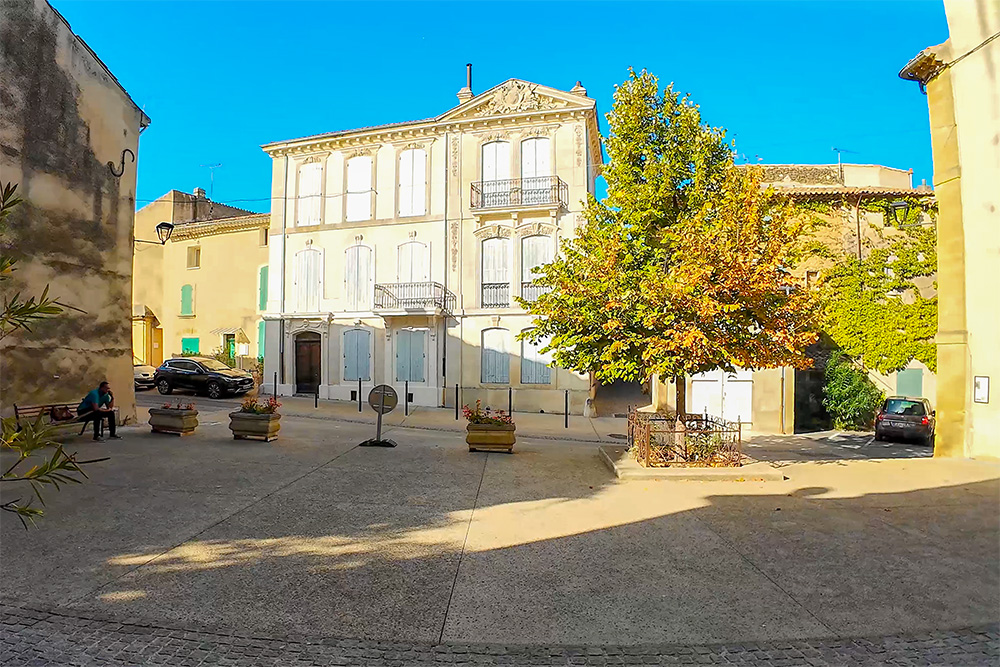
Maison du Colonel © French Moments
The façade on the left dates from 1782. It is the more sober façade with lintels, a cornice and a princely porch with hanging garlands.
The façade on the right is much more recent, dating back to 1898. It is decorated with a harp and an Irish shamrock. The owner was a colonel in the 175th Irish Infantry Regiment. The pilasters are adorned with garlands of flowers, and a fine triangular pediment displays a triumphal coat of arms.
The Church of Lauris
The Place de l'église gives access to the Notre Dame de la Purification church. The façade of the Catholic parish church of Lauris is symmetrical and sober.
The statue of the Virgin and Child on the façade is by the sculptor Ollier and dates from 1854. Carved from limestone, it is 2.20 metres high.
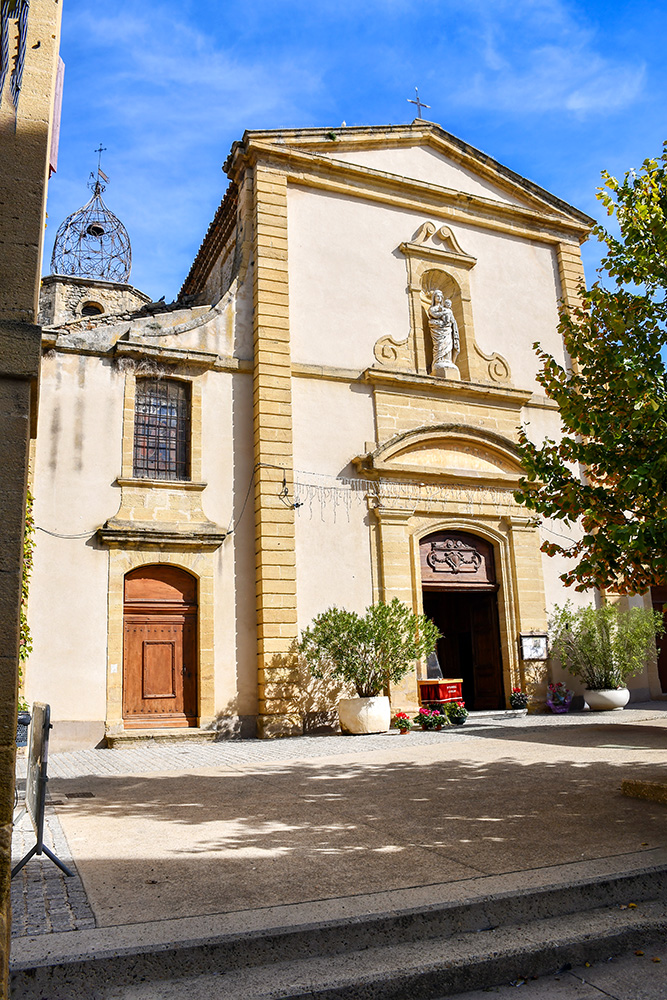
The façade of the church © French Moments
The first church was built on this site in 1480.
Having become too small and run-down, a new church was constructed between 1702 and 1708 based on plans by Vallon, an architect from Aix-en-Provence.
The interior features fine paintings from the 17th to 19th centuries.
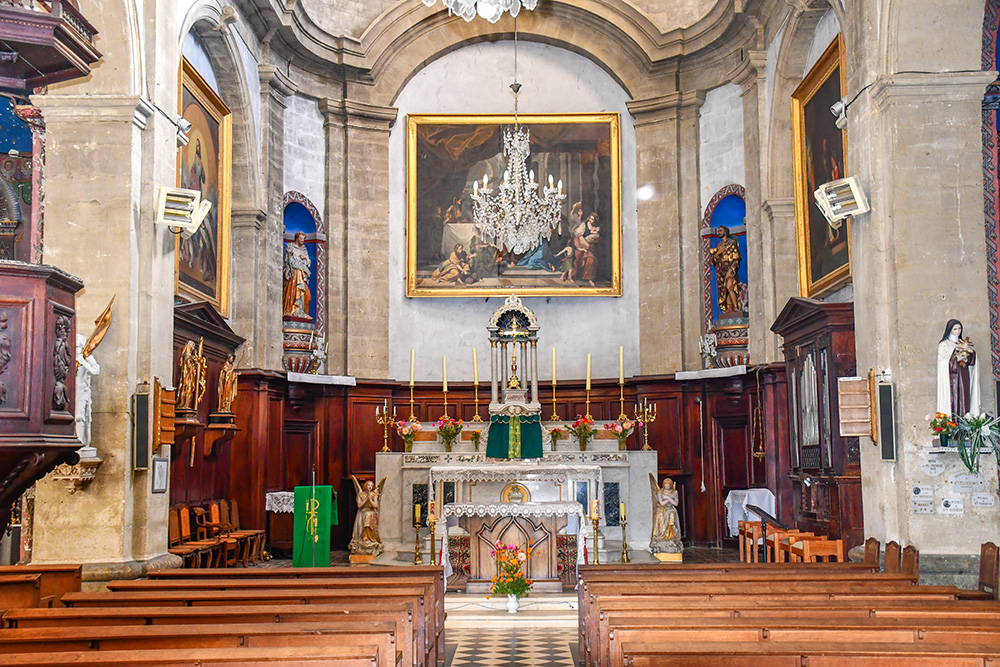
Inside the church - the altar © French Moments
Take the little “Passage de l’église" which descends to the Rue sous les Campanes. It will offer you an interesting view of the back of the church and its beautiful wrought-iron campanile.
From the Rue sous la Campane, the back of the church looks like a fortress. This is explained by its position along the old medieval wall.
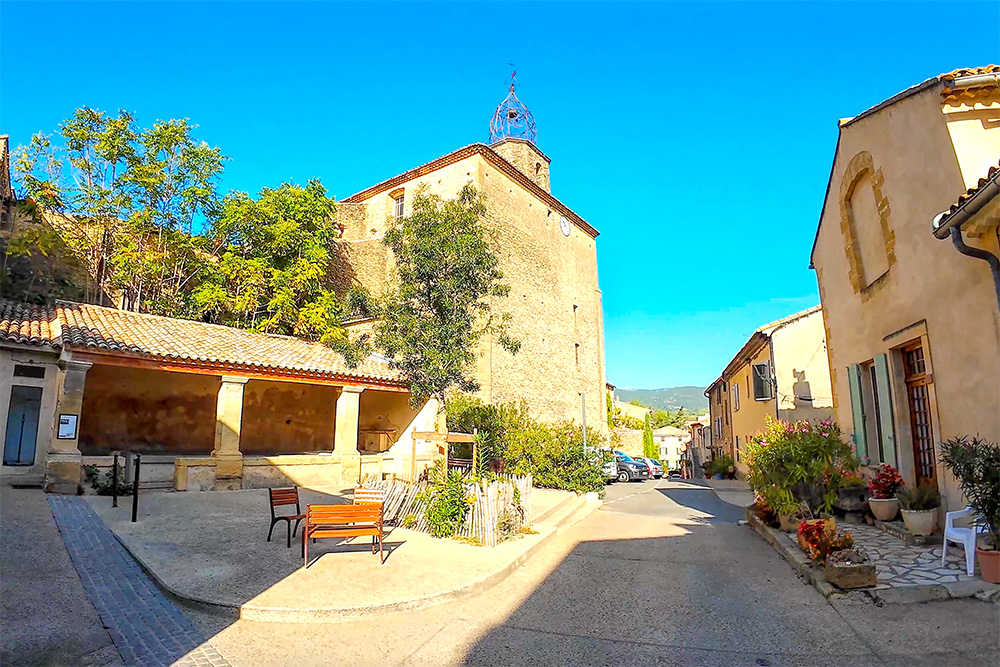
Rue sous la Campane © French Moments
The Campanile
The church bell tower of the Lauris church supports a unique wrought iron campanile forged in 1857 from a design by an architect in Apt.
This splendid campanile features a bulb-shaped cage ("gabie" in Provençal) adorned with scrolls, topped by an openwork sphere.
It is surmounted by a weathervane, a flag, and a cross.
The shape is thought to have been inspired by an umbellifer that curled up during a very dry summer.
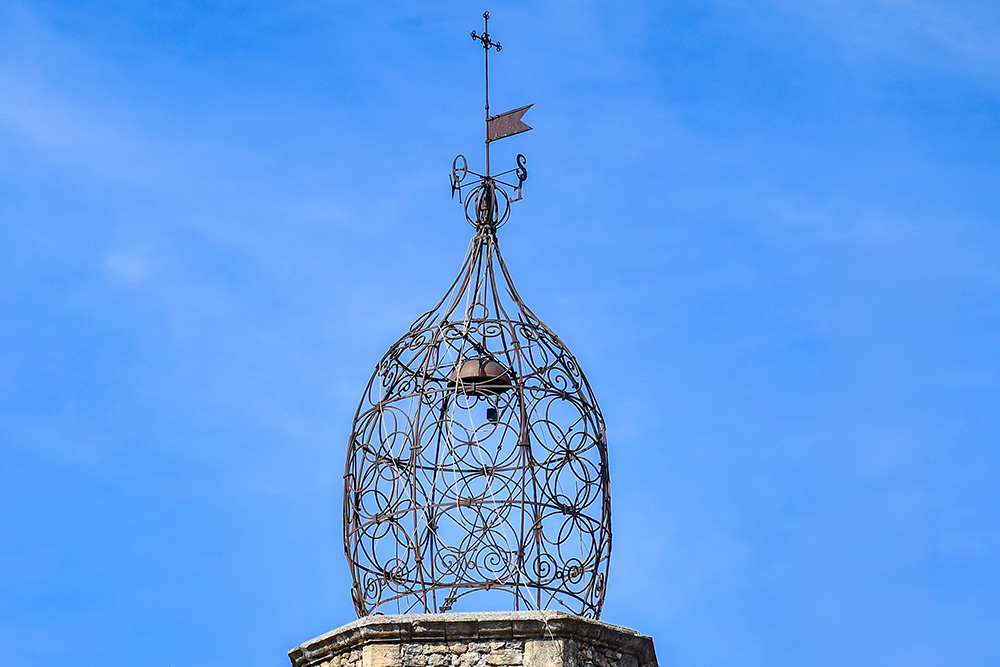
The wrought-iron campanile © French Moments
As with all the campaniles in Provence, their shape is designed to protect them from the effects of the mistral wind.
Rather than housing a bell, this campanile contains a clock's chime.
In my opinion, it is the most beautiful campanile in Provence.
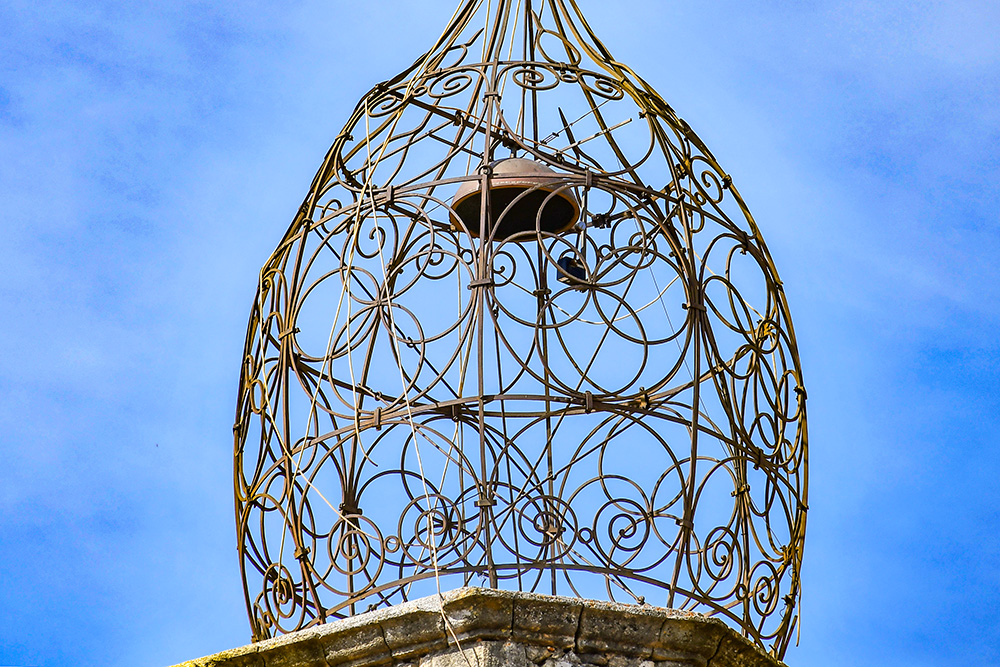
The wrought-iron campanile © French Moments
The Wash house
In the Rue sous les Campanes is the Lauris washhouse.
This public washhouse dates from 1871 and was used until 1960.

The wash house © French Moments
Twice a year, the "grande bugade" (washing of clothes) was held, which was a real social event and a great opportunity for the women of the village to get together.
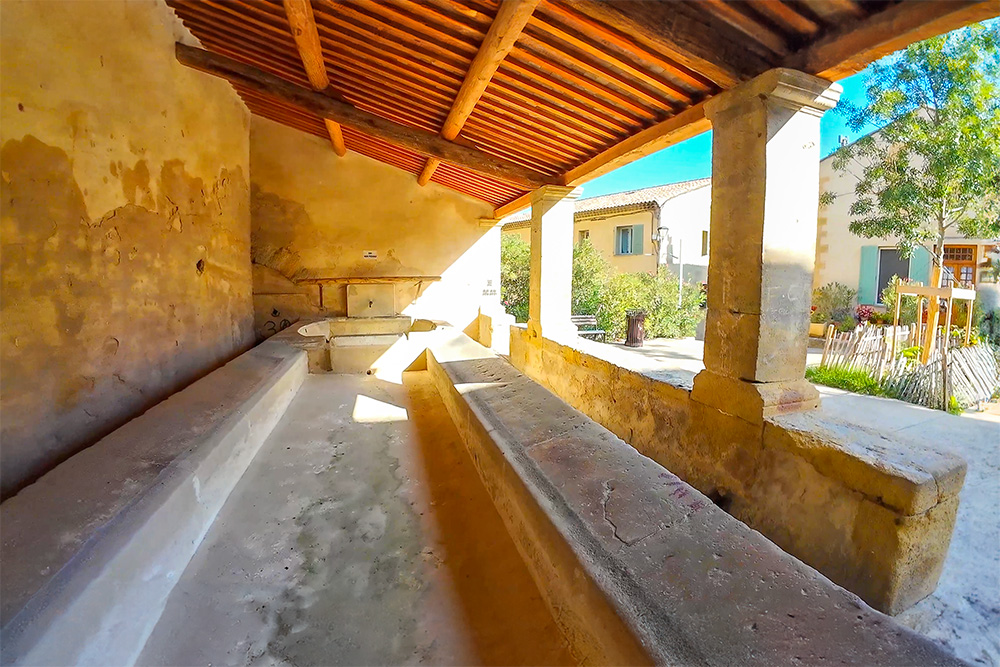
Inside the wash house © French Moments
On your way back to the Avenue Joseph Garnier, admire the typically Provençal postcard image with its three carriage doors.

The three carriage doors © French Moments
Retrace your steps back to the Place de la Mairie by walking on the Avenue Joseph Garnier.
Find out more
Here are some pages from our blog and other websites to find out more about this Provencal destination.
- Discover the hilltop villages of the Luberon
- Explore the neighbouring villages of Lourmarin and Cucuron
- Find out more about Provence-Alpes-Côte d'Azur
- The official tourist office of the area
Where to stay near Lauris
Lauris and surroundings have a high capacity for holiday accommodation. The commune and its surroundings has hotels, bed and breakfasts (covering all price ranges), estate agencies offering seasonal rentals and gîtes.
Click here to book your accommodation in the Luberon or browse the map below:
What to do in the Luberon
Be inspired by a list of things to do in the Luberon:
Pin Lauris on Pinterest







